What did the Ancient Romans eat? The Rich Tapestry of Ancient Roman Gastronomy
The eating habits of the Romans were interesting… and sometimes weird.
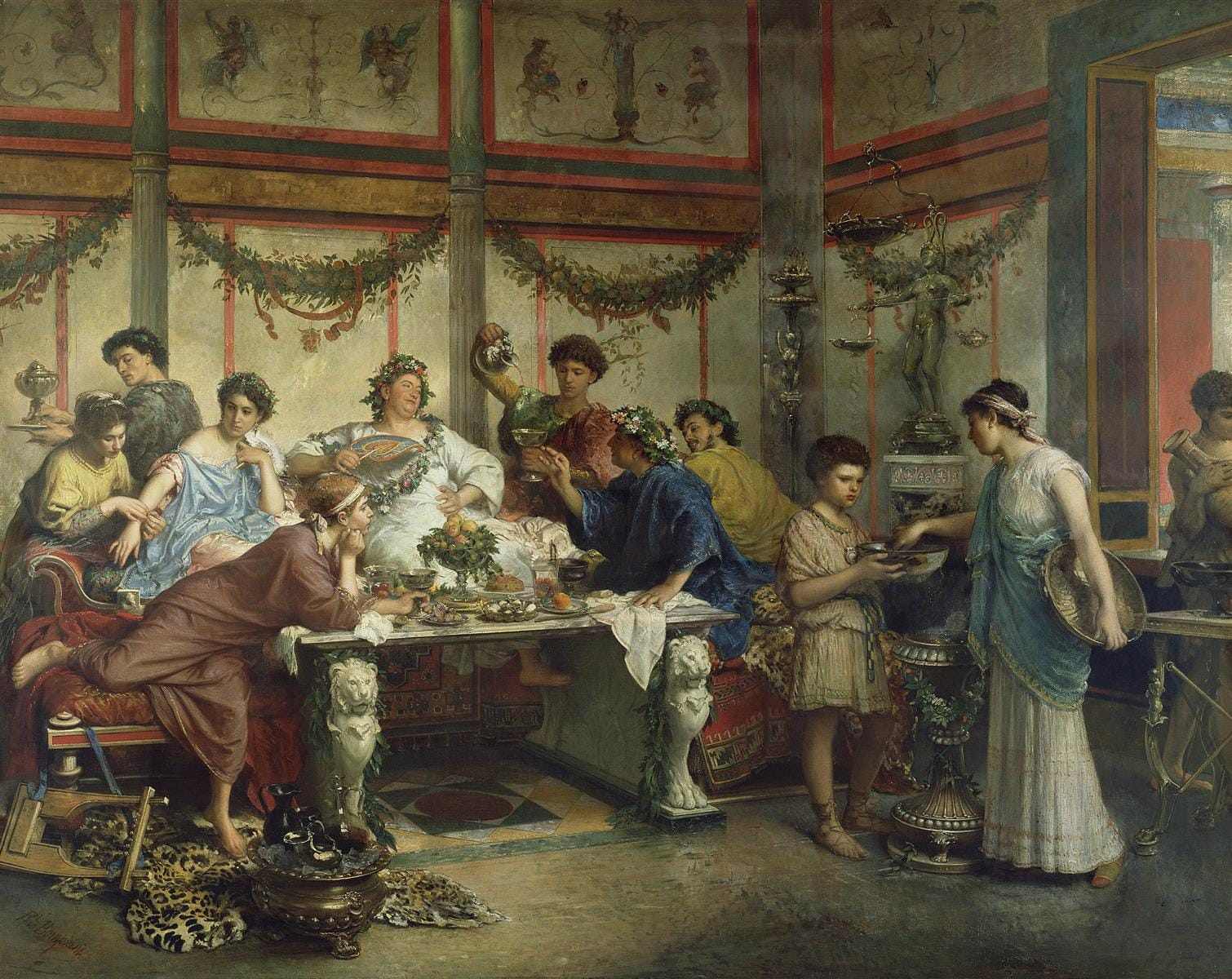
In the shadow of the Colosseum and across the sweeping expanse of the Roman Empire, food played a central role in the social and cultural fabric of ancient Rome. From the opulent feasts of the patricians to the modest meals of the plebeians, the culinary world of the Romans was as diverse as the empire itself.
Grains, particularly wheat, were the cornerstone of the Roman diet, providing sustenance in the form of bread for all social classes. The state played a role in grain distribution, offering rations of unmilled wheat to citizens, widely known then as the“frumentatio”, emphasizing the grain's centrality to Roman life.
The people of ancient Rome had a strong affinity for bread, although the quality of bread varied depending on one's social status. Among the different types of bread, there was a black bread, affordable for the less fortunate, and a luxurious white bread known as "panis candidus," reserved for the wealthy. Additionally, starting in the 4th century BC, they introduced "puls," a wheat-based porridge, into their diet.
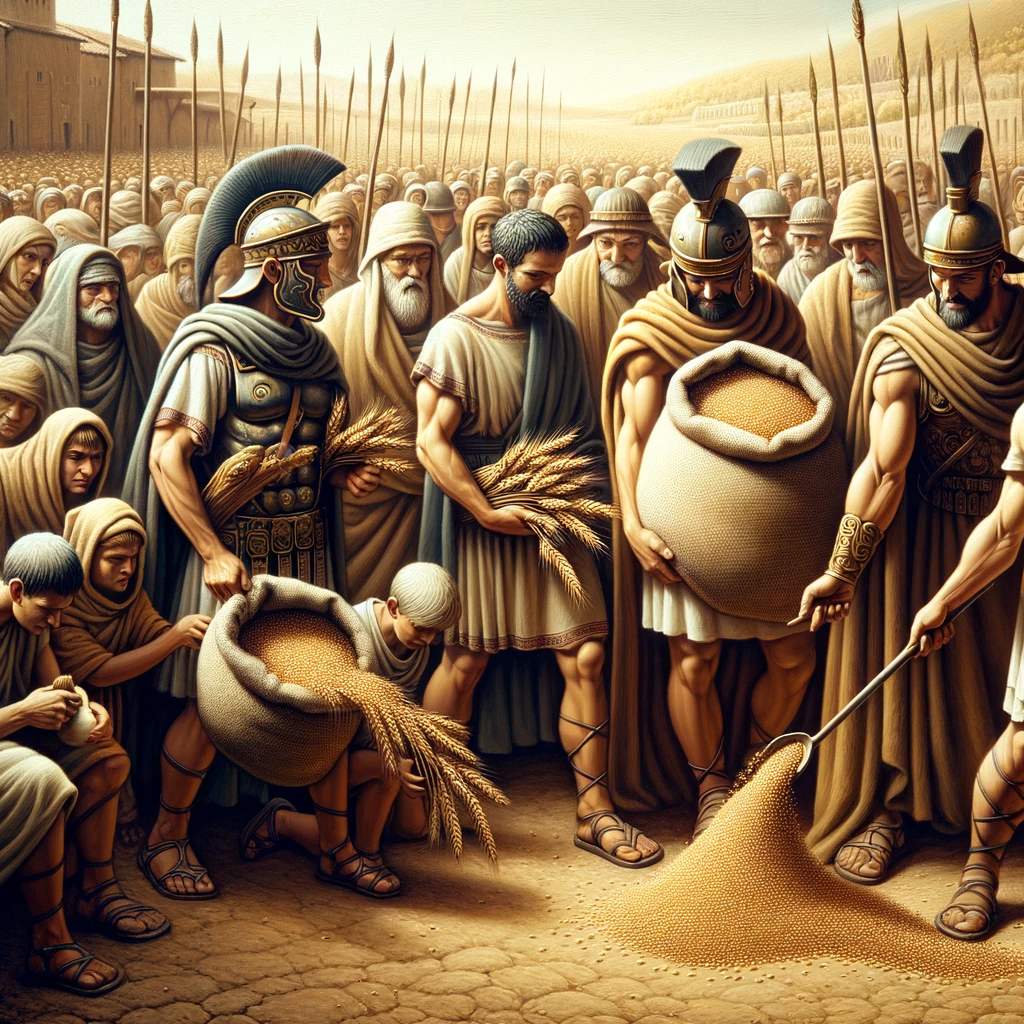
While bread was a universal staple, the Roman diet also included a rich variety of fruits, vegetables, and legumes. The vast array of over 20 types of vegetables and herbs, olives, and even truffles and wild mushrooms, offers a glimpse into the Roman's appreciation for the produce of their land. Their diet also extended to a wide selection of fruits, including imported dried fruits and nuts, reflecting the interconnectedness of their empire.
To be more specific, the Roman table was abundant with vegetables like beets, leeks, and gourds, often dressed with vinegars or made into savory sauces. Fruits were diverse, ranging from the familiar figs and grapes to the exotic cherries and pears, introduced from afar. Legumes, including beans and peas, provided a crucial protein source, especially for those whose status precluded regular consumption of meat.
Meat consumption in Rome depicted social status, with the wealthy enjoying a range of meats and exotic birds as delicacies, while the poor relied on more accessible options like pork sausages. Seafood, fish and poultry was a valued part of the diet for those who could afford it, and the cuisine included everything from common fish to the extravagant likes of flamingos and ostriches.
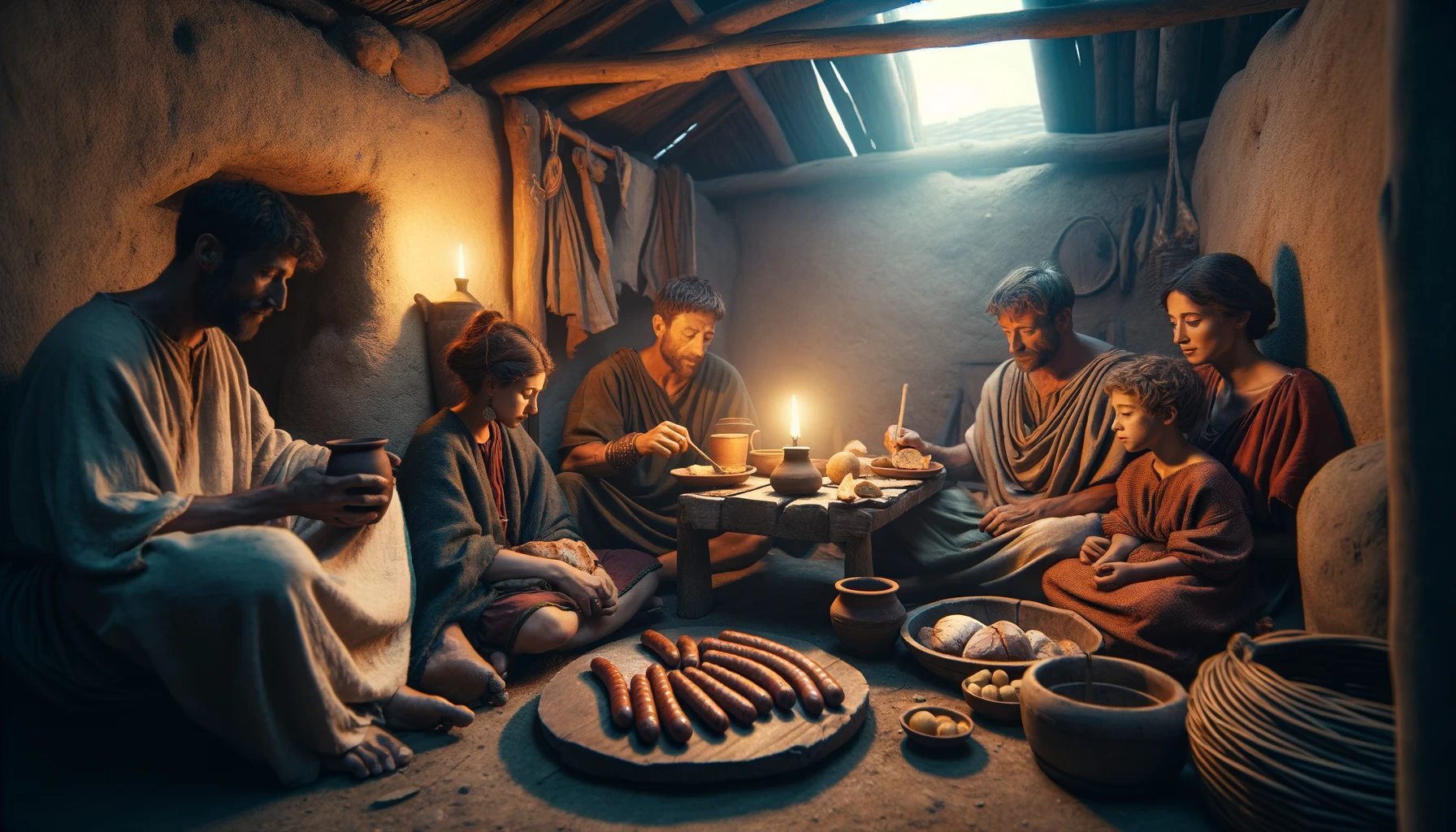
Dairy products, though not as prevalent as other food categories, were included in the Roman diet, primarily in the form of cheese. Fresh milk was used sparingly, often for culinary or medicinal purposes, as cheese was more practical for storage and transportation.
The ancient Romans were pioneers in the art of cheese-making, crafting a variety of cheeses that ranged from firm to soft textures. Even soldiers' provisions included cheese, underscoring its significance. Emperor Diocletian (284 – 305 AD) went as far as enacting regulations to set the price of cheese. Pliny the Elder also documented its medicinal attributes in his writings.
Fruits such as apples, figs, grapes, and pears were eaten fresh or dried for preservation. Legumes like lentils, peas, and chickpeas were a significant source of protein and were often used in stews. Ancient Romans love apricots, imported to Rome from Armenia.
Eggs seem to have been available to all classes, but larger goose eggs were a luxury.
The Roman culinary scene was not without its sweet treats. Honey was the primary sweetener, and desserts were a part of their diet, including creations like cheesecakes and fruit tarts. Their love for sweets is also evidenced in the sweet, spiced wines that have been recorded in ancient recipes.
Wine was ubiquitous in Roman society, consumed by all social classes, albeit of varying qualities. It was typically diluted with water, and for the lower classes - especially popular among Roman legions - a sour wine with water known as posca provided a common drink.
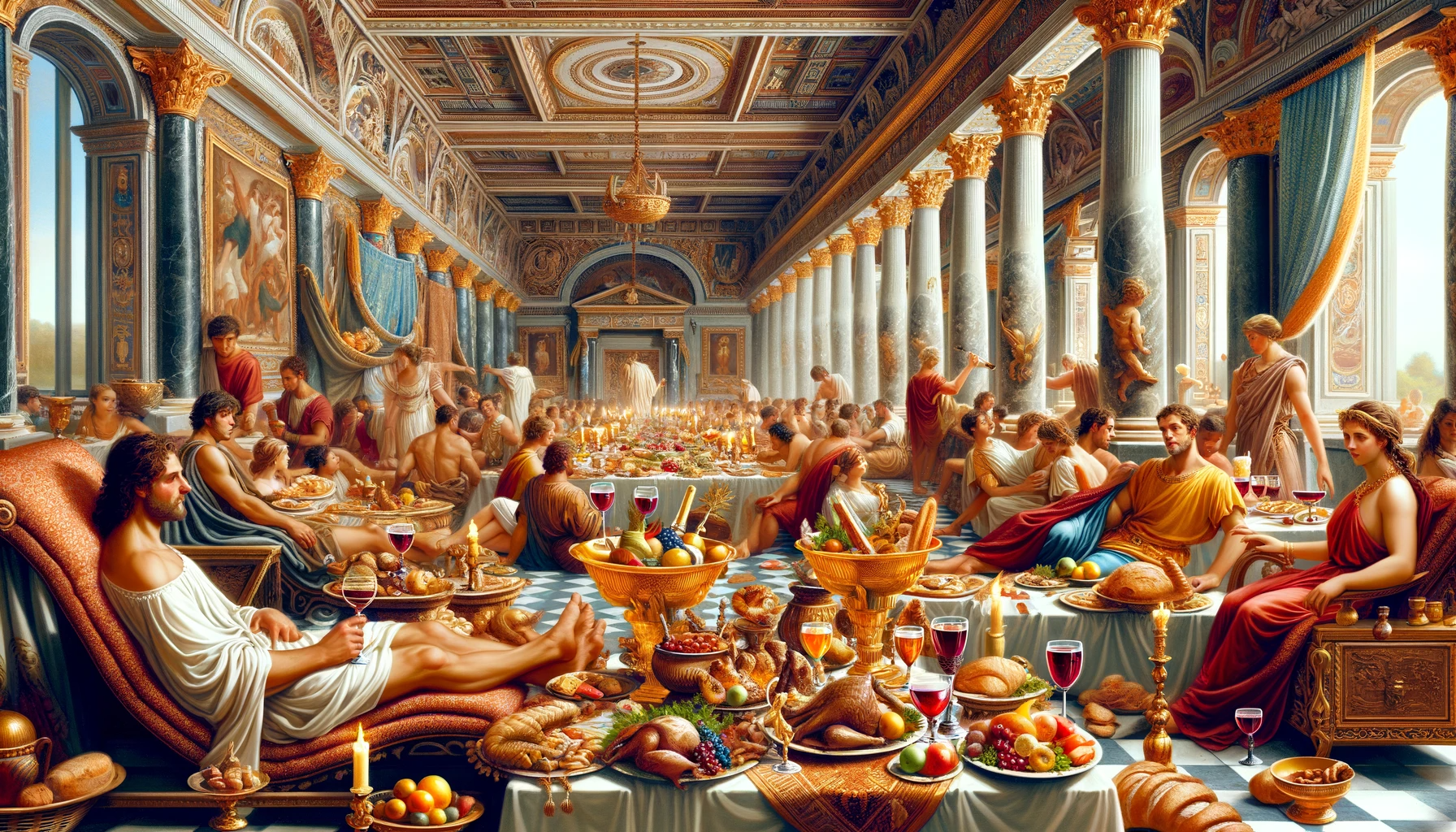
Drinking wine throughout the day was a widespread practice among both the affluent and the less fortunate, including slaves. However, it was strictly forbidden for women. Various qualities of wine were available, and many of them had robust flavors. As a result, they were often diluted with water and enhanced with spices, culinary herbs, or honey.
Roman meals were spread across the day, starting with a modest breakfast, the ientaculum, of bread and wine, followed by a light lunch, the prandium and culminating in the cena, around 3 to 5 pm which was the main meal. Dinner could last up to 6 or 8 hours in special occasions and was an affair of social and cultural significance. This meal structure and the foods consumed speak to the complexity and richness of Roman society.
For lunch, normally, the Romans used to go to the so-called "thermopolium" some kind of fast-food restaurants – because most houses did not have a kitchen.
Some of the most weird and interesting things that the Romans were eating
- Stuffed Dormice - That mouse was bigger than the ones we know today and was usually stuffed with pork and seasoned with pepper and broth.
- Flamingo Tongue - The Romans were not selective about the types of birds they consumed, ranging from peacocks and parrots to pigeons. Among these, flamingos were particularly prized, symbolizing wealth and social status, making them a coveted delicacy at upper-class gatherings. Specifically, flamingo tongues were considered a gourmet delicacy among affluent Romans, often featured as the centerpiece of lavish meals.
- Lamb Brain - For an ordinary weeknight dinner, what could be more intriguing than lamb brain? The ancient Romans savored this delicacy in numerous preparations, including curing, boiling, and baking. A notable recipe from Apicius combines lamb brain with eggs, pepper, and even rose petals, showcasing their adventurous culinary spirit.
- Sow’s Womb - Sow's womb refers to the uterus of pigs that were sterilized before being slaughtered and then used in Roman cuisine. This dish, while not a staple for everyday dining, held its place as a culinary curiosity. For preparation, it was typically cooked with honey, vinegar, and broth, and seasoned with an assortment of spices and herbs, such as celery seed, mint, and pepper, creating a unique and flavorful dish.
- Ostrich – These birds, were a prized food in Ancient Rome, noted for being served with a sauce of honey, herbs, and spices, a preparation detailed in Apicius' cookbook.
- Garum - Garum can be likened to the Ancient Roman equivalent of modern-day ketchup, a ubiquitous condiment used in a wide array of dishes, from marinades and salads to desserts. The preparation involved fermenting fish innards and blood with salt in a container for several weeks, leading to a highly aromatic and flavorful sauce. Spices and herbs were then added to fine-tune its taste. Despite its seemingly unappetizing preparation, garum was highly valued for its believed medicinal and nutritional benefits, making it a staple across all social classes.
- Sea Urchins - Sea urchins, resembling sea porcupines, were a versatile ingredient in Roman cuisine, used as toppings, main courses, or sides. They were typically cooked in olive oil and sweet wine, with a seasoning of pepper, and could complement a range of dishes, from brain-based recipes to cheese casseroles. Sea urchins remain a delicacy even in contemporary diets.
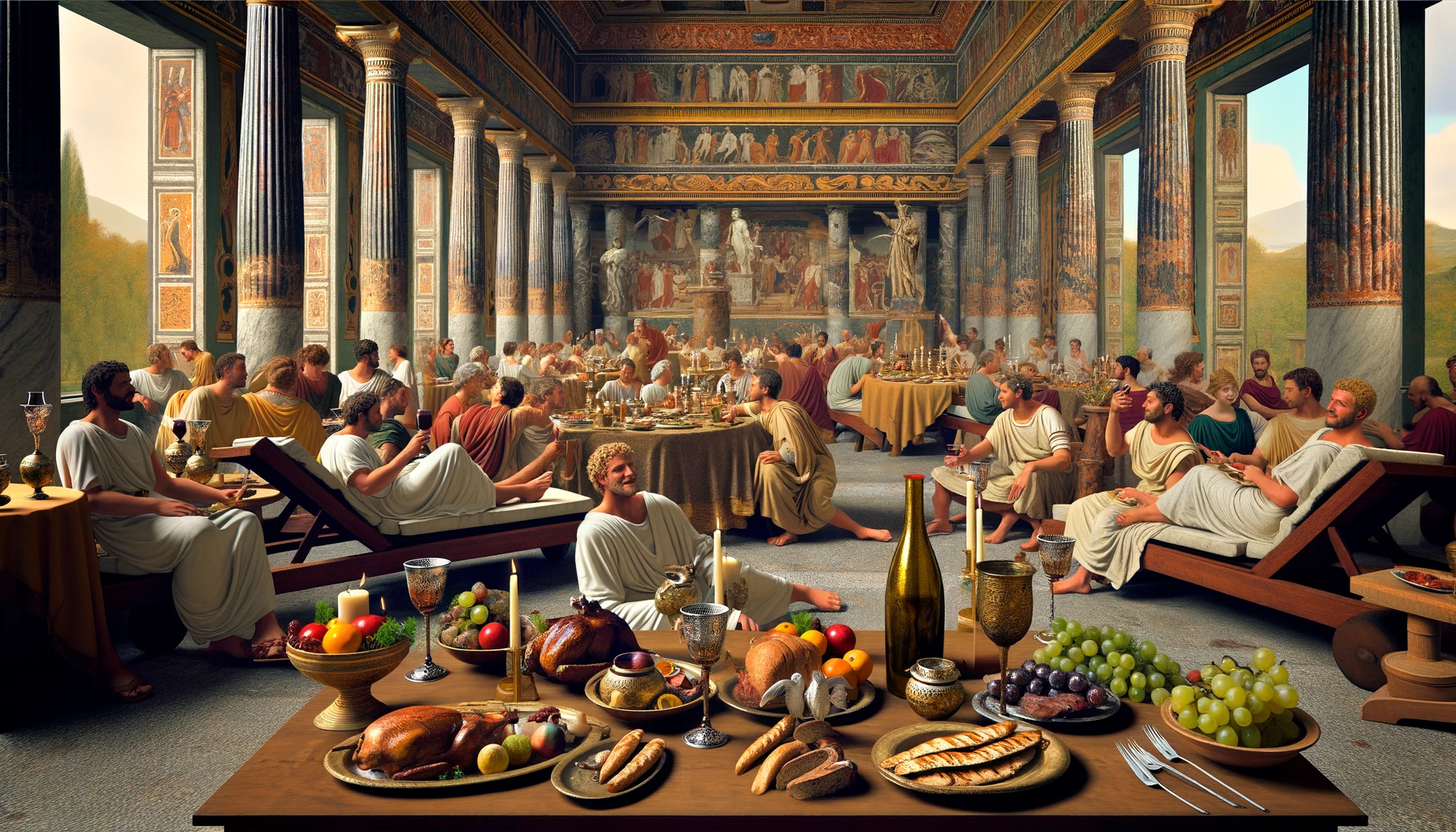
Dining practices varied greatly between the classes. The elite often dined reclined on couches, enjoying multiple courses, while the lower classes had simpler meals.
Seasonings were essential in Roman cooking, with salt being a fundamental element. Garum, a fermented fish sauce, added flavor to both savory and sweet dishes. The Romans also enjoyed a variety of garden herbs and imported spices, such as pepper, which was a valuable commodity.
The diet of ancient Romans, as varied as the empire itself, ranged from simple grains and vegetables to exotic meats and elaborate desserts. The Roman table was a reflection of its vast territories, social stratification, and the exchange of goods and ideas throughout the Mediterranean and beyond. The ingenuity and complexity of Roman cuisine continue to influence our culinary landscape to this day.









About the Roman Empire Times
See all the latest news for the Roman Empire, ancient Roman historical facts, anecdotes from Roman Times and stories from the Empire at romanempiretimes.com. Contact our newsroom to report an update or send your story, photos and videos. Follow RET on Google News, Flipboard and subscribe here to our daily email.
Follow the Roman Empire Times on social media: